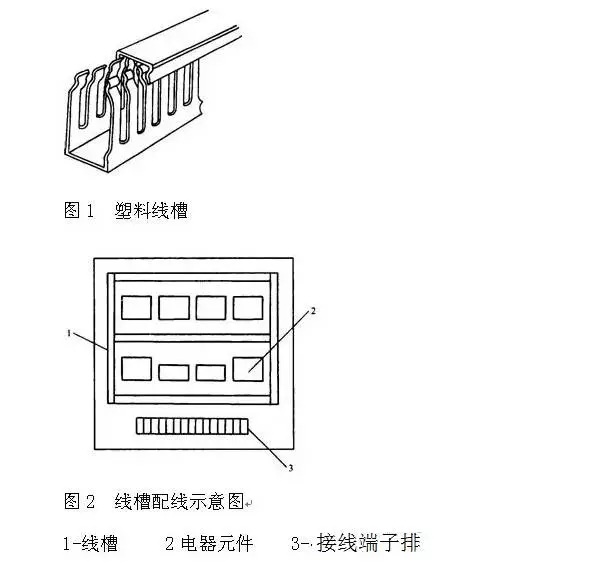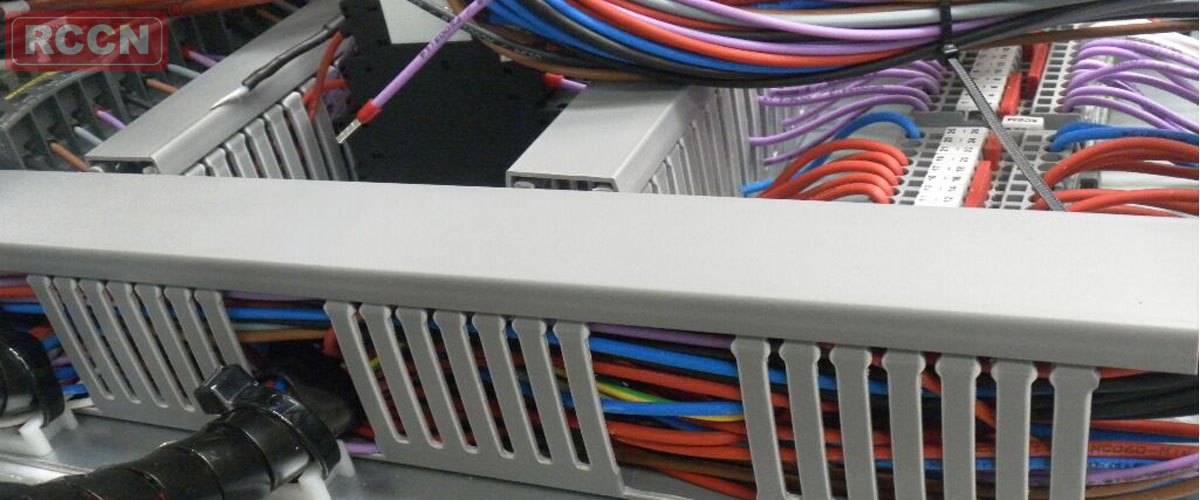There are two types of electrical control cabinet wiring inside and outside the cabinet. The wiring outside the cabinet is usually used for wiring, and the wiring inside the cabinet has clear wiring, dark wiring, and wire trunk wiring.
First, the line pipe wiring
All the wires that are not in the electrical control cabinet should be piped. The pipe wiring has the characteristics of resistance to moisture, corrosion and wire damage to mechanical damage, and is often used to withstand certain pressures.
1 . Iron pipe wiring
l) According to the use occasion, the wire cross section and the number of wires, the type of pipe and the pipe diameter should be selected. The cross-sectional area of the wire to be worn should be 40% smaller than the cross-sectional area of the pipe inner diameter.
2) As far as possible, the iron pipe should be laid at the shortest distance, and the pipeline should be as small as possible or bent (generally no more than three). When the pipeline is led out of the ground, the height from the ground should not be less than 0.2m.
3) When the iron pipe is bent, the bending radius is not less than 4 to 6 times of the pipe diameter, and there shall be no cracks and dents after bending, and the pipe mouth shall not have burrs.
4) Before laying the pipeline, the debris and moisture in the pipe should be removed first, and the pipe plug should be plugged with cork; the pipe clamp should be supported by the pipe and the pipe should be horizontal and vertical.
5) Wires of different voltages and different circuits shall not be worn in one tube except DC circuit wires and grounding wires. It is not allowed to wear a single wire in the iron pipe.
6) The wire inside the iron pipe is not allowed to have a joint, nor can it be worn by a person who is insulated and damaged.
7) The insulation strength of the pipe-through conductor shall not be less than 500V; the minimum cross-sectional area of the conductor shall be 1.5mm2 for the copper core wire and 2.5 mm2 for the aluminum core wire.
8) When the pipeline is threaded, a wire with a diameter of 1.2 mm is used as the lead wire. When the wire tube is short and the bend is small, the wire lead can be sent from one end of the pipe to the other end, and one person pulls the wire and pulls the wire. If the pipe is long or there are many elbows, bend it into a small hook at the end of the lead and wear the lead at the same time from both ends of the pipe. When the wire leads meet in the tube, the wires are hooked together and the leads are pulled out from one end to pull the wires out of the tube. Note that when threading, it is necessary to add a retainer to the nozzle and ensure that the length of the threaded conductor is greater than the total length of the pipeline.
9) The iron pipe should be reliably protected from zero or ground.
2 . Metal hose wiring
The connection between the electrical appliances or equipment of the machine itself is usually made of metal hose wiring. When using metal hose wiring, the specification of the metal hose should be selected according to the total cross section of the pipe-through wire; for the metal with disjointed and recessed metal The hose can not be used; the metal hose should have a joint at both ends, and the middle part should be fixed with a pipe clamp; the moving metal hose should be properly fixed and have sufficient allowance.
Second, the wiring inside the cabinet
According to the characteristics of electrical circuits and equipment requirements, choose a reasonable wiring method in the electrical control cabinet. Several common wiring methods are introduced below.
1 . Clear wiring
The wiring is also called the front wiring of the board. It is characterized by clear wiring and convenient inspection, but the process requirements are high and the wiring speed is slow. It is suitable for equipment with relatively simple circuit and few electrical components. Pay attention to the following aspects when using the wiring.
1) For the wiring, the BV type single-strand plastic hard wire is generally used as the connecting wire.
2) The line should be neat and tidy, horizontal and vertical, and the corner should be right angle; the wires arranged in a bundle are fixed by wire harness; the laying of the wire does not affect the disassembly of the electrical components.
3) The wire and the terminal shall ensure a reliable electrical connection. The wire end shall be bent into a horn ring; when the wires of different sections are connected at the same terminal, the large section is at the bottom and the small section is at the top, and each terminal is not in principle. More than two wires.
4) The wires should not overlap or cross as much as possible.
2 . Dark wiring Dark wiring is also called board rear wiring. It is characterized by neat and beautiful board surface and fast wiring speed, but it is difficult to check the electrical line fault. The following points should be noted for the dark wiring.
l) The mounting holes of the electrical components and the position of the wire threading holes should be accurate and the hole diameter should be appropriate.
2) The connection line between the front of the board and the electrical components should be in reliable contact, and the wires passing through the board should be perpendicular to the board surface.
3) When the switchboard is fixed, the side on which the electrical components are mounted should be oriented toward the door of the control cabinet for inspection and maintenance, and a certain gap should be left between the plate and the mounting surface.
3. Trunking wiring
It combines the advantages of clear wiring and dark wiring installation. It is not only quick and easy to install and construct, but also has a neat appearance and is easy to check and repair. It is a widely used wiring type, especially suitable for complicated electrical lines. Installation of electrical equipment with many electrical components. Plastic stranded flexible wires are generally used as their connecting wires. Cable trunking is shown in Figure 1 and Figure 2.
In order to facilitate wiring and maintenance, all the incoming and outgoing lines of the control cabinet must be connected through the terminal block. The number and specifications of the terminal block should be selected and assembled according to the number of incoming and outgoing lines and the current flowing, and according to the number of connecting wires. No. The terminal block is installed at the bottom or side of the cabinet, see Figure 6-5.
4, electrical component layout
The layout of electrical components in the electrical control cabinet or on the switchboard should be reasonable. The general principle is that the connecting wires are the shortest and the wires are crossed the least.
















 RCCN WeChat QrCode
RCCN WeChat QrCode Mobile WebSite
Mobile WebSite

